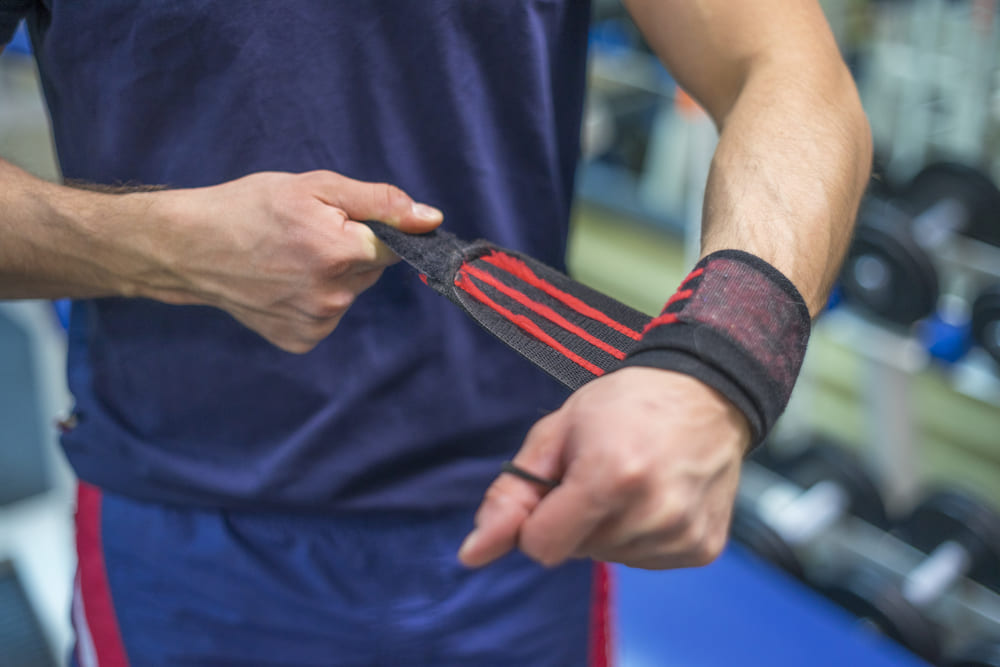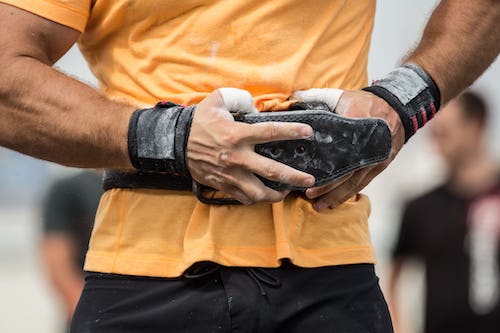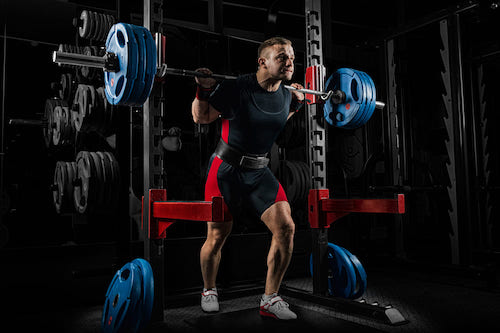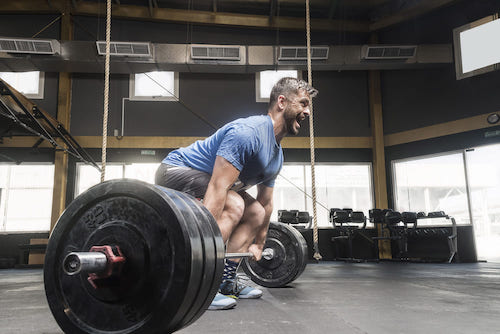Your cart is empty
Start Shopping
Lifters who are serious about their sport love their gear. This is because having the right equipment will improve performance, reduce fatigue, and keep you from getting an injury.
So, how about using wrist wraps? Do they need to be in a weightlifter’s gym bag? A powerlifter, weightlifter, Crossfitter, or bodybuilder will always say “yes” to that question.
The benefits mentioned above will be discussed in more depth in this article. Therefore, continue reading, and let’s get started!
What are wrist wraps for lifting?
· It provides a secure and comfortable grip for weight lifting.
· Injuries to the wrist can be alleviated, and strength can be restored with a wrist wrap.
· It maintains wrist stability, which prevents strains and injuries.
· It increases your stamina, so you can keep going while feeling less tired.
What do wrist wraps do?
Wearing wrist wraps when lifting helps stabilize the wrist joint, which is particularly important for preventing injury. The load may place unnecessary stress on the joint without keeping the wrist in a neutral posture (i.e., stacked exactly over the forearm).

If you keep training with your wrist in a less-than-ideal posture, you will discover that you cannot lift as much weight, or even worse, it can lead to pain, inflammation, and injury.
What are the benefits of wrist wraps for lifting?
Below are the seven benefits of using wrist wraps when lifting.
1. Get more from your workouts
Working out vigorously causes muscular fatigue and breakdown. But not every muscle group loses strength and function at the same rate. Generally speaking, the smaller stabilizing muscles in your body tire out first, followed by the larger primary movers.
The use of wrist wraps may prevent the exhaustion of smaller muscle groups. Take the case of a bench press AMRAP, where the load is kept constant at 70%. (as many reps as possible). At the start of the set, your wrists will be stacked squarely on top of one another; however, as the set goes on, the little forearm muscles that help stabilize the wrist will fatigue.
2. Ensure joint stability
When lifting weights, your wrists endure considerable strain.
You’ll most likely be holding a barbell or dumbbell while working out. A wrist that is even slightly angled forward, backward, or laterally will experience increased tension at the joint.
This type of wrist motion while carrying a load is precisely what you want to restrict. Wrist wraps support the wrist, making it harder to move the wrist.
3. Allows gripping more weight
In order to improve your grip strength for activities like deadlifts, rows, chin-ups, etc., wrist wraps are a great investment.
Just try it out:
· Place your right palm on your left arm’s wrist.
· You should cross your right thumb and index finger across your left wrist.
· Squeeze your right hand as tightly as you can.
· Pay attention to your left hand, particularly the fingers.
You should see that the fingers on your left hand are beginning to shut.
If you wrap your wrists tightly, your grip will weaken this way. Thus, wrapping the wrists tightly prevents the hand from opening as the smaller forearm muscles fatigue.
4. Reduce your risk of injury
Muscle fatigue is a normal response to exercise, although it won’t affect every muscle group simultaneously. Bodybuilding and Crossfit-body workouts work for various muscular groups at once, which causes them to tire at different rates.

The muscles are shielded from fatigue by a protective covering. They use a molecule called adenosine triphosphate (ATP), synthesized by muscle tissue and used as an energy source. ATP is manufactured and stored in the Mitochondria. The larger the muscle, the greater capability of production and storage. Hence the smaller muscles just can’t manufacture as much or store as much ATP which leads to faster fatigue. You might think of this as a scientific saying, “your muscles will fatigue during exercise.”
The smaller stabilizing muscles, such as those found in the wrists and knees, will tire first, followed by the bigger muscles.
5. Helps alleviate wrist pain and injury recovery
Wrist wraps can aid in the recovery of an existing wrist injury, allowing you to get back to lifting sooner.
You should listen to your doctor since wrist wraps aren’t a miracle treatment for injuries.
Wrist wraps are useful for those who want to lift weights despite wrist pain or discomfort.
Wraps can offer the stiffness needed to maintain the joint neutral, which helps relieve pain produced by bending or flexing the wrist, two common causes of discomfort.
6. Makes the weight feel lighter
If you grip the barbell firmly, the weight will feel lighter than it is, boosting your self-assurance as you work up to lifting heavier loads.
The concept of proprioception—the body’s awareness of its surroundings, including the sensation of muscular force and exertion—is responsible for this effect.
Receptors in our skin, muscles, tendons, and joints all contribute to our innate sense of proprioception. So, when holding a barbell, the weight and our position in space continually communicate with our brain.
Making your muscles stiff will help you develop better proprioception.
7. Reduce muscle strain
Wrist wraps help you feel less strain on your forearms and get a firmer grip on the bar, contributing to a more manageable sense of weight in your hands while you lift.

Prove it to yourself by doing a full set with and without wrist wraps; you’ll find that the weight will seem lighter with the wraps, although being the same bar load, due to the increased leverage.
Types of Wrist Wraps
Wrist wraps can be split into two broad categories:
• Cotton
• Elastic, Polyester, and Cotton Blend
Cotton wrist wraps won’t give you the necessary support to enjoy the benefits we’ve just covered, so I wouldn’t even consider using them. The joint may feel warmer, but the stability of the joint will not improve.
The combination of elastic, polyester, and cotton in the wrap allows it to be snugged around the wrist. In addition, the materials used in these combinations tend to be thicker, so they can withstand more weight.
Most blended wrist wraps cost $5 to $10 more than their cotton counterparts. A high-quality wrap that can give the required support is worth the extra investment.
Final Thoughts
Wrist wraps are useful for the bench press because they improve joint stability, extend the user’s fatigue threshold, prevent wrist injuries, allow a firmer grip on the bar, and make the weight feel lighter.



